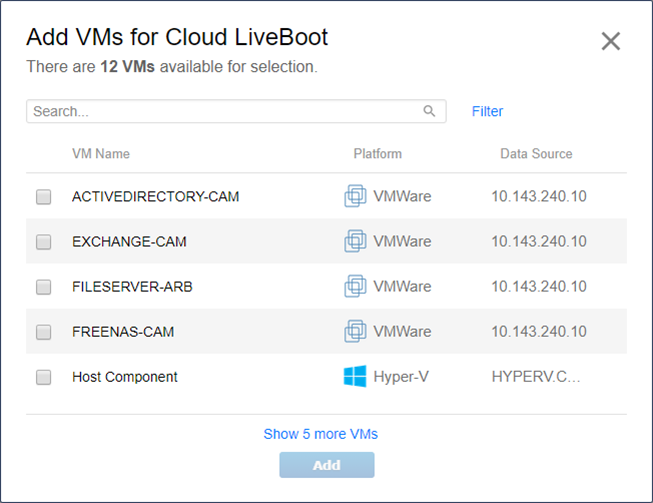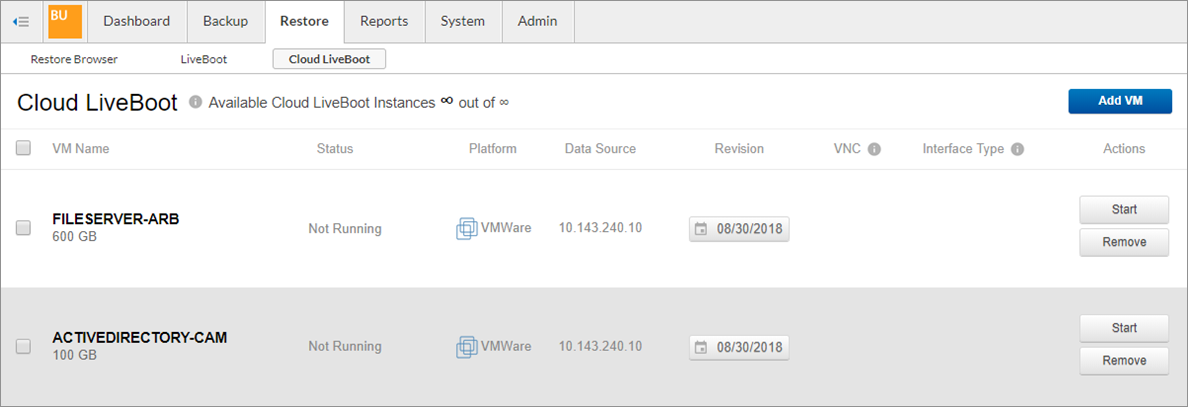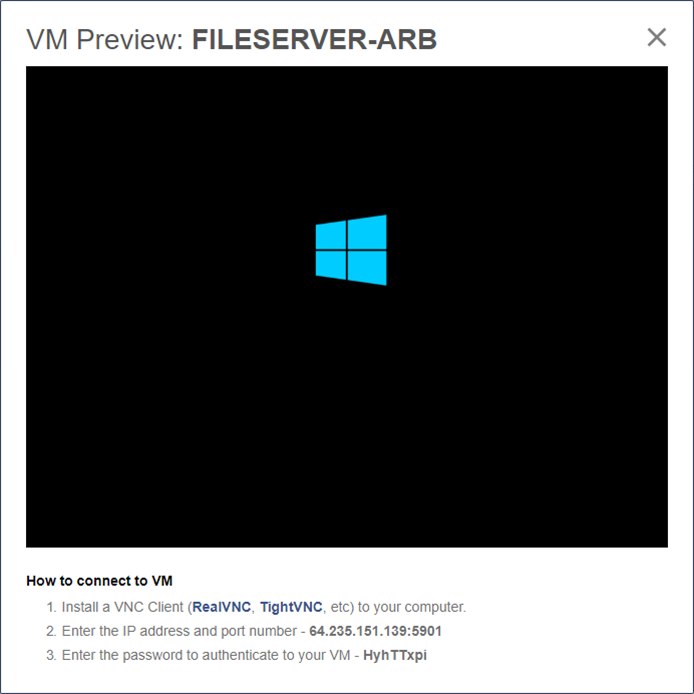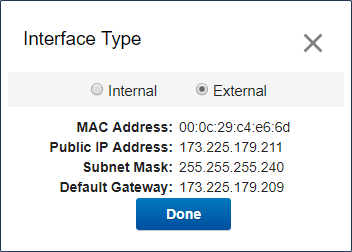Cloud LiveBoot allows you to boot VMware and Hyper-V virtual machines (VMs) in the Barracuda Cloud for testing, recovery verification, and file-based recovery.
Cloud LiveBoot is available to all Barracuda Backup customers with an Instant Replacement and Barracuda Cloud Storage subscription and is available to all customers excluding those in Japan, Australia, Germany, and New Zealand. Note that you can still use Cloud LiveBoot to retrieve replicated data while you are waiting for your Instant Replacement appliance to arrive.
Once VMs are booted in the Barracuda Cloud, you can connect to them by using the VNC client of your choice. Barracuda Networks provides you with a unique IP address and password for each VM. VMs running in the Barracuda Cloud remain operational for seven days before they are shut down and permanently deleted. If you require additional time, contact Barracuda Networks Technical Support.
The number of VMs that you can run in the Barracuda Cloud at once is based on the Barracuda Backup model, as shown in Table 1.
Table 1. Virtual Images by Model
Barracuda Backup Model | Maximum Number of Running VMs |
|---|---|
190/290/390 | 1 |
490/690/6090 | 3 |
790/791 | 4 |
890/891/895/8090/990/991/995/9090/1090/1091/1191/10090 | 5 |
In addition to the limits on number of VMs that can be run at once in the Barracuda Cloud, there are also limits on the size of the VM that can be booted in the Barracuda Cloud, as shown in Table 2.
Table 2. Cloud LiveBoot Supported Limits
Maximum vCPU Cores | Maximum RAM | Maximum VM Size | Maximum Number of Disks |
|---|---|---|---|
8 | 16 GB | 2.5 TB | 4 |
To use Cloud LiveBoot to recover a VM in the Barracuda Cloud:
Log into the Barracuda Backup cloud interface.
Go to the Restore > Cloud LiveBoot page.
Click Add VM to display up the VM selection dialog box.
Select the VMs you want to add to the Cloud LiveBoot page for recovery:

Click Add.
In the Revision column, select which backup revision you want to recover for each VM. The latest revision is always selected by default.
Once you are ready to boot a VM in the Barracuda Cloud, click Start:

Once the VM Status changes to Running, you can click the Live Preview link in the VNC column to watch the boot progress:

To connect to the VM and take control of it, launch a VNC client and enter the IP Address and Password provided in the VNC column.
By default, the VM is provided a local or internal IP Address/network interface. When the Interface Type is set to Internal, the VM is not connected to the Internet. To enable Internet access, atop the VM, then click the Edit link in the Interface Type column. In the Interface Type dialog box, click External, and click Done. Click Restart to reboot the VM. Use the network settings provided in the Interface Type column to configure the IP address, subnet mask, and default gateway inside the guest OS. Repeat this process to switch back to the Internal Interface Type:

When done with the VM, click Stop, then click Destroy. This powers off the VM and permanently deletes the instance from the Barracuda Cloud. If you wish to keep your changes and download a copy, click Download.
